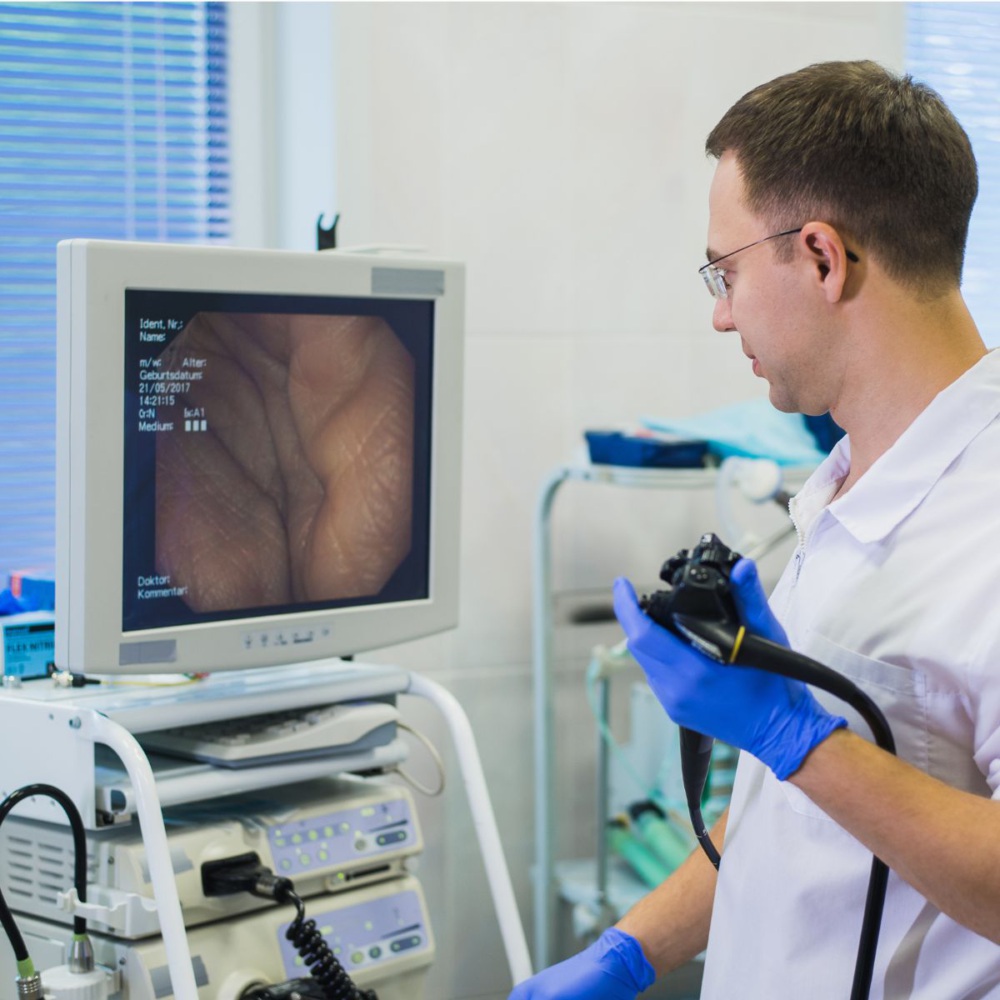Möglichkeiten der Darmkrebs-Vorsorge: Was ist das Richtige für mich?

Da sind viele Dickdarmkrebs screening options—but which one do you choose? Talk with your health care provider about your options to select the right screening for you. The best screening is the one that gets done, so despite potential discomfort, put it on the calendar.
Note: All time intervals indicated are for normal test results. You may have to get more frequent tests if you have increased colorectal cancer risk or if abnormal test results are found.
Visual Tests
Colonoscopy: every 10 years
In this procedure, a tube with a light and a camera gets inserted through the rectum into the colon to look for irregularities. Not only does this procedure screen for cancer, but it can also remove pre-cancerous polyps (growths), making it preventive against cancer too. Before a colonoscopy, the person getting screened needs to prepare by fasting for some time and drinking bowel preparation fluids or taking oral medication to clean out the colon.
Note: If you take any of the other tests and get abnormal results, you must get a colonoscopy too.
LESEN SIE AUCH | You never forget your first time…getting a colonoscopy
Virtual colonoscopy: every five years
Less invasive than a traditional colonoscopy, the virtual colonoscopy is a procedure that uses a CT-scan and X-rays to examine the colon for abnormalities. It does require similar bowel prep to the colonoscopy, but no tubes are used and sedation is not required.
Flexible sigmoidoscopy: every five years
Compared to a colonoscopy, this procedure examines only the lower part of the colon. The procedure involves a tube with a camera so the doctor can view the inside of the colon. Cleaning of the bowel with prep ahead of time is required.
Stool-based tests
Guaiac based fecal occult blood test (gFOBT): every year
This stool-based test is sent to a lab to detect if there is blood in the stool. After getting a kit from a health care provider, you can take the test at home and mail in your results. People who opt for this test need to modify their diet in preparation.
Fecal immunochemical test (FIT): every year
This stool-based test is sent to a lab to detect if there is blood in the stool. After getting a kit from a health care provider, you can take the test at home and mail in your results. This test doesn’t require any modifications to your diet.
Multitarget stool DNA test (mt-sDNA): every three years
This stool-based test detects whether there are blood or DNA mutations present. You take the test at home and mail your results to the lab.
March is Colorectal Cancer Awareness Month. For more information on colorectal cancer signs, symptoms and screening options, visit preventcancer.org/colorectal.